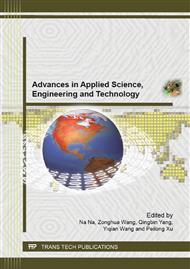p.658
p.662
p.667
p.671
p.675
p.681
p.687
p.691
p.695
ScanSAR Mode Sea Ice Image Segmentation
Abstract:
Non-stationary nature of the SAR image is a major obstacle to the automatic interpretation of SAR sea ice image. Incidence angle effect is one of the main factors leading to instability in the sea ice image features. Wide observation with automatic interpretation of SAR sea ice image,incidence angle effect on sea ice region, considering the speckle noise, the incidence angle effect and uncertainties, to the region through the pixel and then to large-scale regional a way, the merger of the incident angle effect correction on the scale of the regional clustering, class and regional operating combination of up to improve the segmentation algorithm for non-stationary adaptability.
Info:
Periodical:
Pages:
675-678
Citation:
Online since:
June 2013
Authors:
Keywords:
Price:
Сopyright:
© 2013 Trans Tech Publications Ltd. All Rights Reserved
Share:
Citation:


